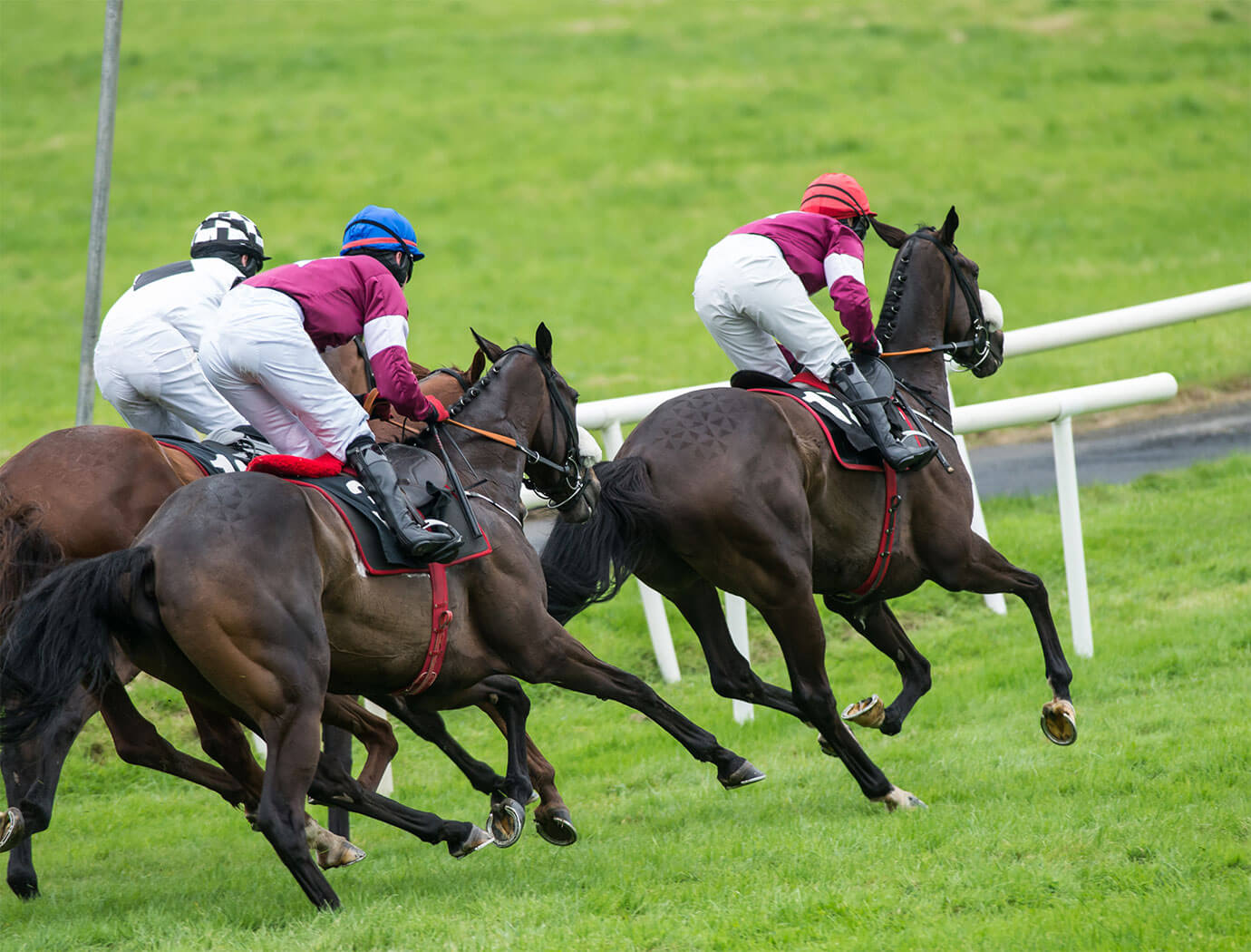Cheltenham Racecourse is a left-handed, oval-shaped British horse racing venue in the Cotswolds Hills of Gloucestershire. Widely regarded as the home of UK National Hunt action, the Cheltenham Festival is held over four days in March and is the premier jumps meeting in the British Isles.
Cheltenham horse racing events are a supreme test for the equine athletes taking part, with stamina essential for the extremely undulating course. Cleeve Hill is climbed in the back straight, before a downhill run to the home bend and the famous Cheltenham uphill run-in to the winning post. A full circuit of the track in Cheltenham races is about a mile-and-a-half. There is the Old Course, the New Course on its inside and the Cross Country Cross within that. All are used throughout the season and during the Cheltenham Festival where key races include the Champion Hurdle and Cheltenham Gold Cup.
Confirmed races in plain text. Confirmed pattern races in bold text. Unconfirmed races in grey text.

The chase track at Cheltenham Racecourse is very complicated. It can be very much a front-runners race because of the difficulty of the fences and the balance your horse needs for them. The calibre there for equine athletes is huge so the pace is fast and there is zero time to make mistakes, they’re costly, so you need a sharp jumper.
The hurdle track at Cheltenham doesn’t have much room. You need a midfield-runner that’s wise and calculated because they might not see much around them given the traffic. They need to be sharp because if you're behind when you start going up the hill it’s so hard. If you’re not at least on the tails of the front then you’ll struggle to have a squeak.
The famous Cheltenham hill at the end is so tough. When you’re flying and have lots of petrol it goes quickly, but if you haven’t had a breather and are playing catchup, you get half way up and you know you’re done for. That finishing post can feel a long way away.

New customers only. This offer is valid for 7 days from your new account being registered. Min Deposit: £10. First deposit matched up to £10. 1 x wagering at odds of 1.75 to unlock Free Bet. Debit Card deposits only (exclusions apply). Free bet will expire 7 days after the 1st deposit. 18 . BeGambleAware.org. Bet The Responsible Way. Full Terms apply.
Full T&C's apply
18+ New customers using Promo code H30 only, Min £10/€10 stake, min odds 1/2, free bets paid as 2 x £15/€15, free bets credited after settlement of first qualifying bet, free bets will expire 30 days after the qualifying bet is placed, payment method/player/country restrictions apply. Full Terms Apply
Full T&C's apply
18+ New UK+IRE customers. PayPal and certain deposit types and bet types excluded. Min £5 bet within 14 days of account reg at min odds 1/2 = 4 x £5 free bets. Free bets valid for 7 days on sports, stake not returned, restrictions apply. T&Cs apply.
Full T&C's apply
Risk Free 20: 18+,New customers only. Place your FIRST bet on any sportsbook market and if it loses we will refund your stake in CASH. Max refund for this offer is £20. Only deposits made using Cards or Apple Pay will qualify for this promotion. T&Cs apply.
Full T&C's apply
18+ - Begambleaware.org - New GB customers only. Min £20 debit card deposit. Place a £20+ bet on Horse Racing at min odds 2/5 (1.4) each leg. Receive 2 x £10 free bets within 24 hours of bet settlement, and further 2 x £10 free bets 7 days later. Valid for Horse Racing only. T&C’s apply.
Full T&C's apply
Cheltenham Racecourse
Prestbury Park,
Evesham Road,
Cheltenham,
Gloucestershire,
GL50 4SH
T: 01242 513014
W: https://www.thejockeyclub.co.uk/cheltenham/
Facebook: https://www.facebook.com/thehomeofjumpracing
Twitter: @CheltenhamRaces